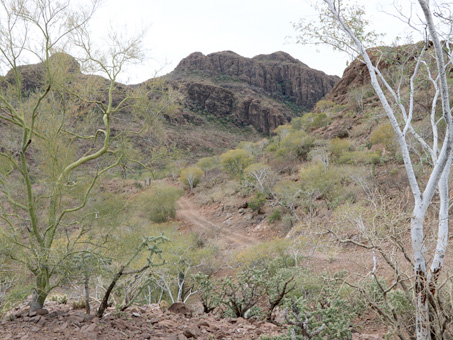This section contains entries about our botanizing in Baja California written for the UC BEE (Oct 2012 to Aug 2021)
and The UC Hive (2022-), monthly newsletters for volunteers and staff of the UC Berkeley Botanical Garden.
Click on any photo for a larger image.
BEE JULY 2020
Sierra Guadalupe — March 10, 2020
This month you'll find images and information from a variety of field trips over the season that didn't make it into past issues. Shelter-in-place orders and hot weather made it more difficult to wander around in the few weeks before we headed north in mid May, so I dug through my files...
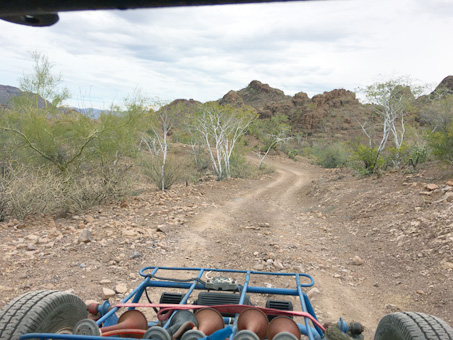
A friend and I headed west, up into the mountains along Arroyo San Nicolás to see what we might find, specifically mosses, ferns and other hydrophytes.
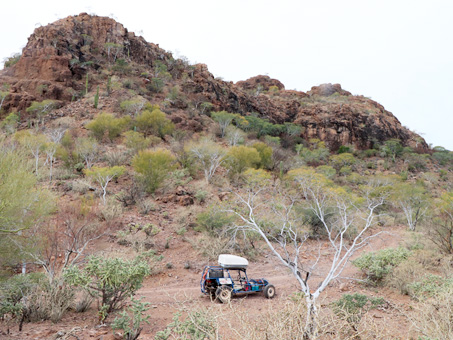
The overcast sky dulled the intense green of the vegetation.
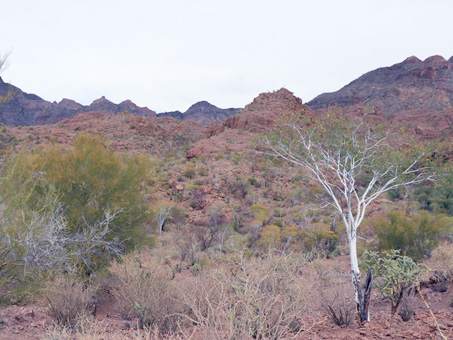
The road has numerous hairpin turns so after awhile, it was hard to keep track of which direction we were going.
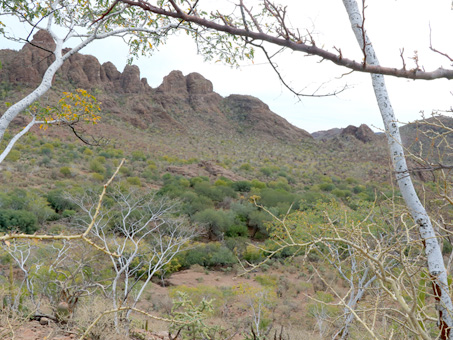
We came around the left of the outcrop in the distance. Mulegé is behind it to the east.
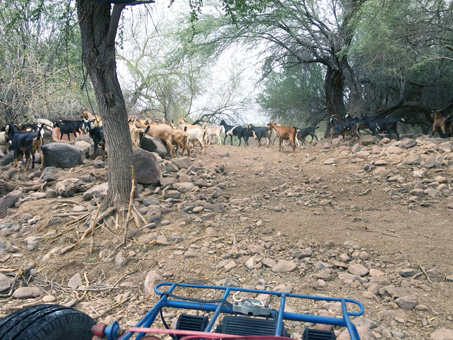
The afternoon commute traffic. Goats returning to the ranch.
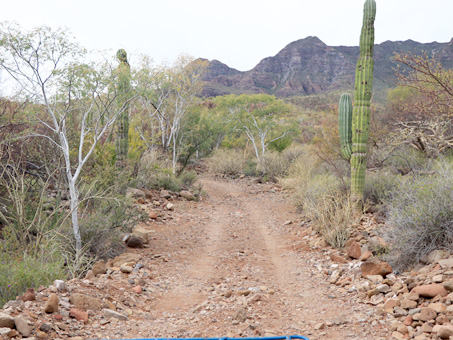
The road is narrow but passable by small truck or 4WD.
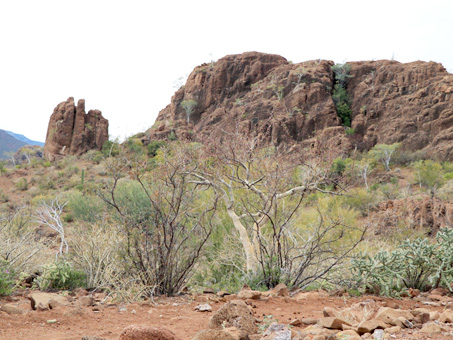
Torote colorado (Bursera microphylla, Burseraceae) and Palo Adán (Fouquieria diguetii, Fouquieriaceae) at center.
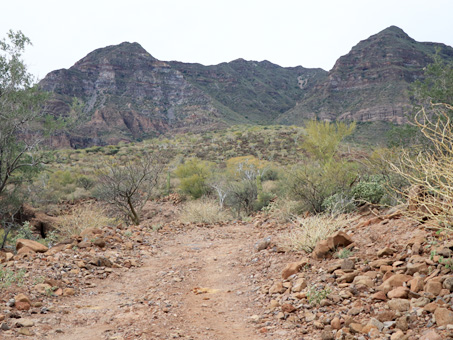
We drove about 30 km by road, but only covered about half that in a straight line almost due west.
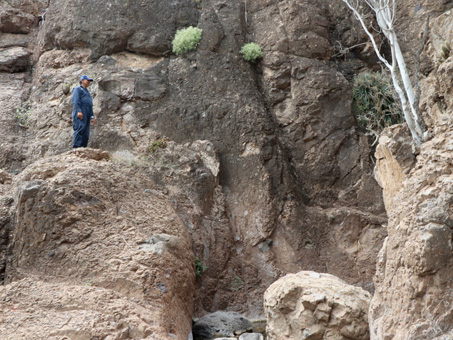
A pool below a natural seep. To the right is a small, narrow keyhole ravine with a seep and small waterfall.
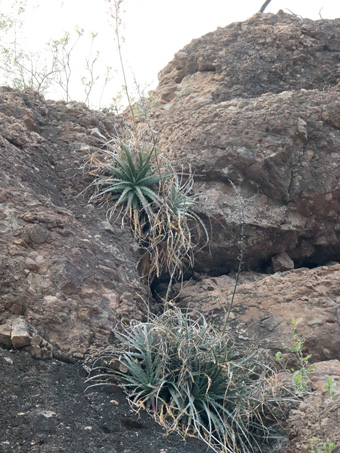
Mountain Hechtia / Mescalito (Hectia montana, Bromeliaceae) growing high up on the cliff above the pool. See the plant a little closer up.

There is a lot of water in the mountains, like in this small, natural cascade fortified above by a small cement wall.
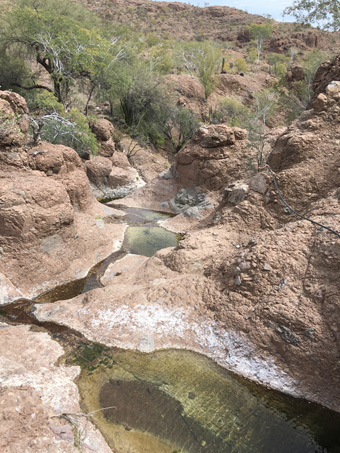
Same cascade, seen from the road
above fortified by a cement wall.
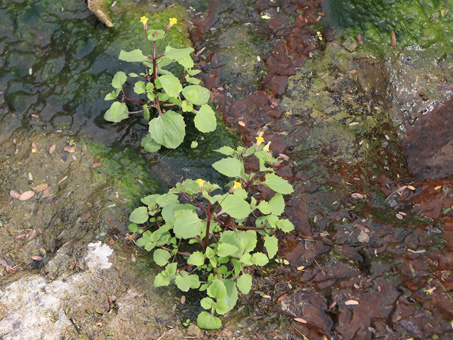
Short-tooth Monkey Flower (Erythranthe brevinasuta, Phyrmaceae), growing in and around the pools. A peninsular endemic.
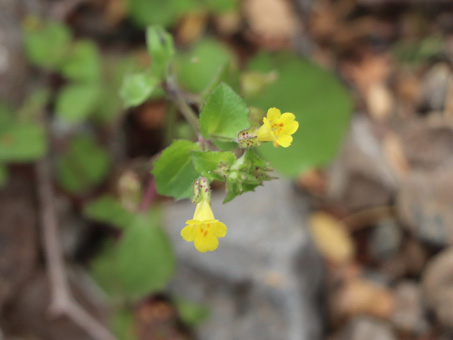
Short-tooth Monkey Flower (Erythranthe brevinasuta, Phyrmaceae) flowers are about 4-6 mm D.
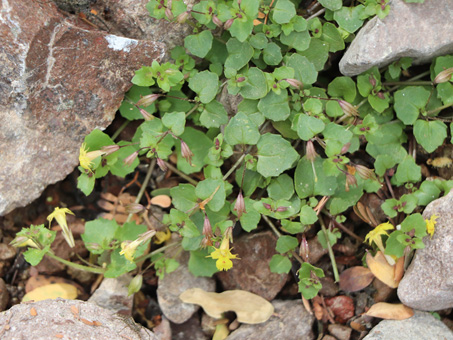
Tooth-Petal Monkey Flower (Erythranthe dentiloba, Phyrmaceae), also found in and around the pools, especially on the wet rock faces.
San Jose de Magdalena — March 29, 2020
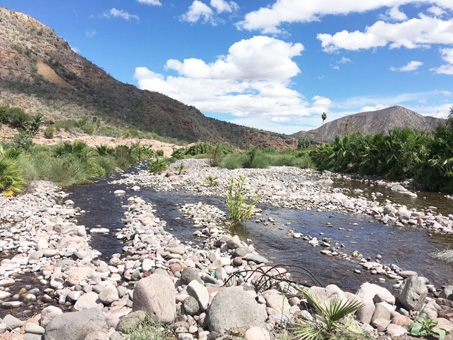
Crossing the main arroyo on the west side of town.
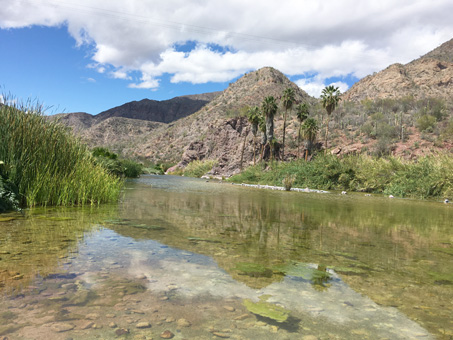
The river crossing as you enter the town from the east, looking toward the northwest.
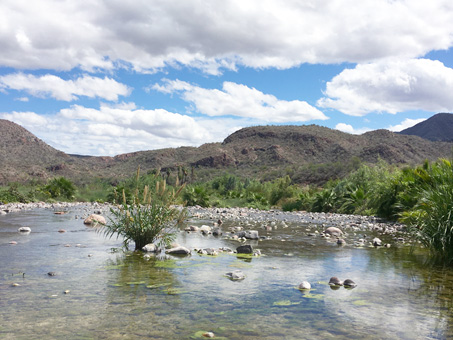
Crossing the river on the east side, but looking southeast.
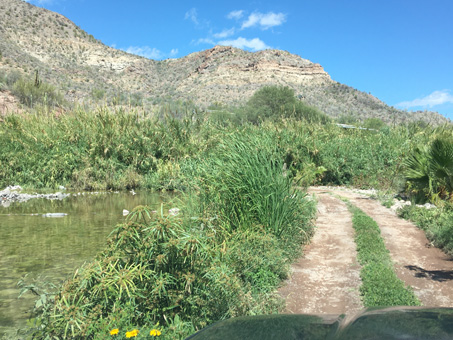
The narrow road crossing the river. Today, it was mostly above water.
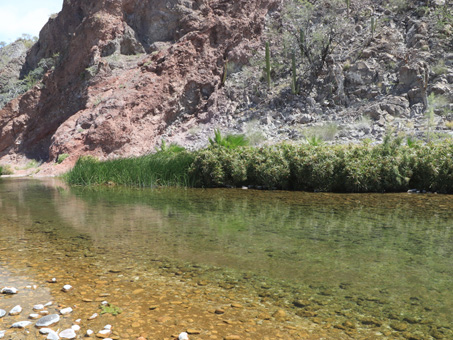
Wide, shallow pools along the arroyo. Cattails (Typha domingensis, Typhaceae) and African Umbrella-Plant (Cyperus involucratus, Cyperaceae).
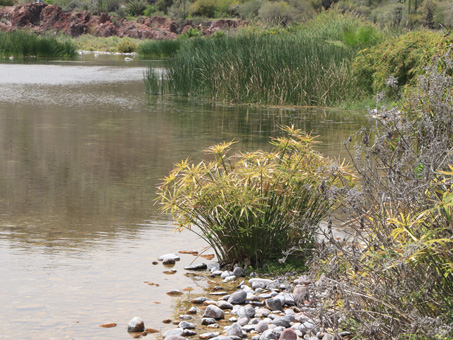
Same pools, looking in opposite direction.
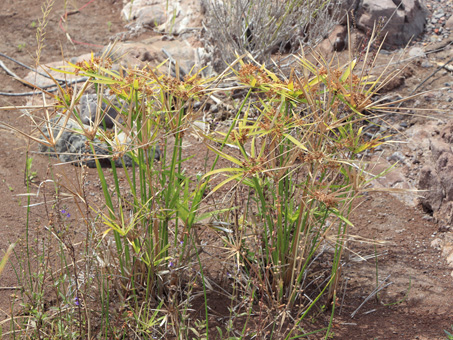
African Umbrella Plant (Cyperus involucratus, Cyperaceae).

African Umbrella Plant (Cyperus involucratus, Cyperaceae).
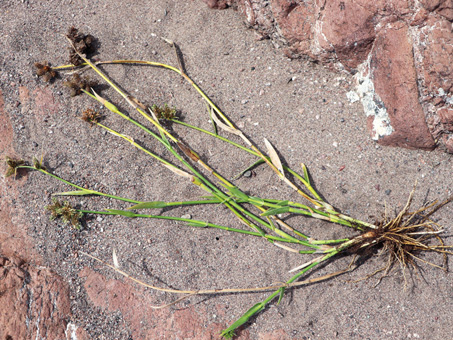
Western Umbrella-Sedge (Fuirena simplex var. simplex, Cyperaceae).
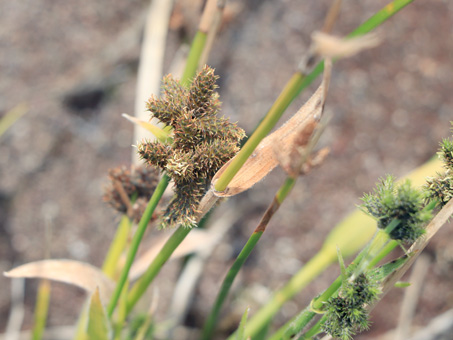
Western Umbrella-Sedge (Fuirena simplex var. simplex, Cyperaceae).
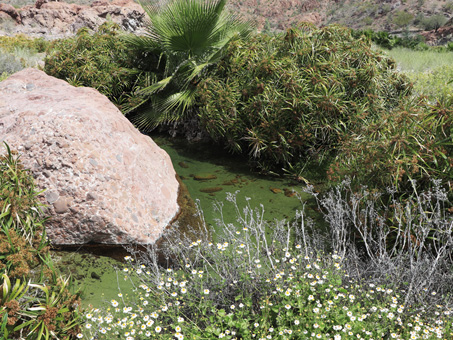
African Umbrella Plant, Amauria rotundifolia (white rock daisies) and a young Fan palm (Washingtonia robusta).
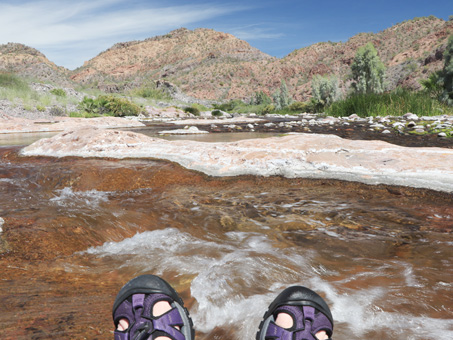
Cooling off in the stream. Refreshing!
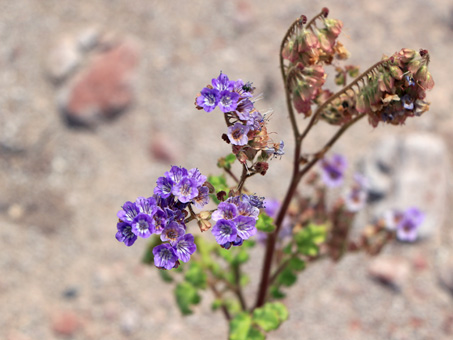
Southern Mountain Phacelia / Rama Zorilla (Phacelia scariosa) in damp soil at the edge of the arroyo.
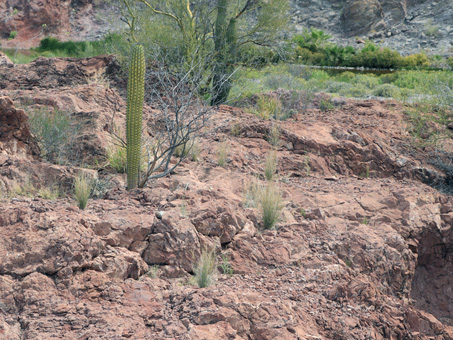
A rocky outcrop above the arroyo bed was home to a variety of plants typical of the local desert scrub.
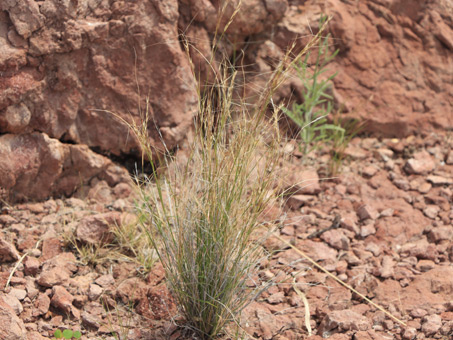
Such as this Aristida species...
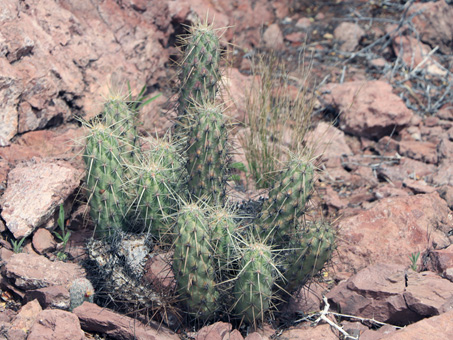
...and this Hedgehog cactus / Biznaguita (Echinocereus brandegeei, Cactaceae). Can you find the hidden Pincushion cactus (Mammillaria dioica)?

Peninsular Cholla / Cholla barbona (Cylindropuntia alcahes var. alcahes) flower bud.
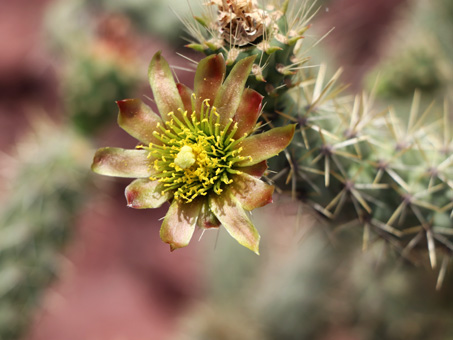
Peninsular Cholla / Cholla barbona (Cylindropuntia alcahes var. alcahes) flower.
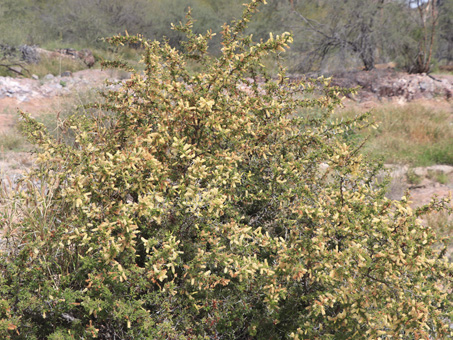
Brandegee Acacia / Vinorama (Vachellia brandegeana, Fabaceae). A BCS endemic.
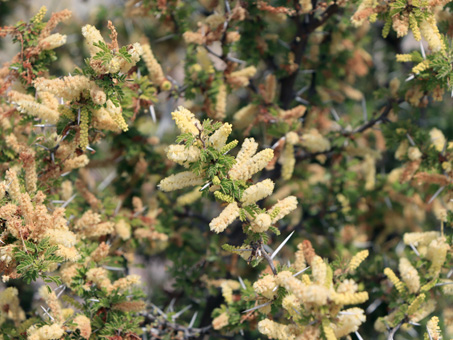
Brandegee Acacia / Vinorama (Vachellia brandegeana, Fabaceae).
Palm Oasis & Ojo de Agua — April & May 2020
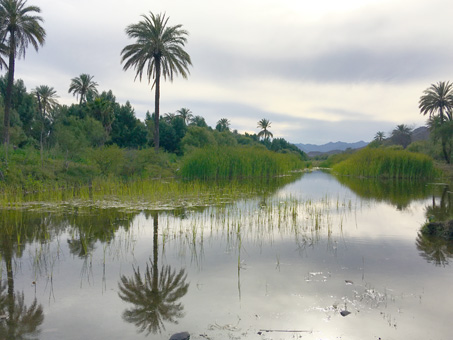
Wetlands west of the Ojo de Agua (March 2020).
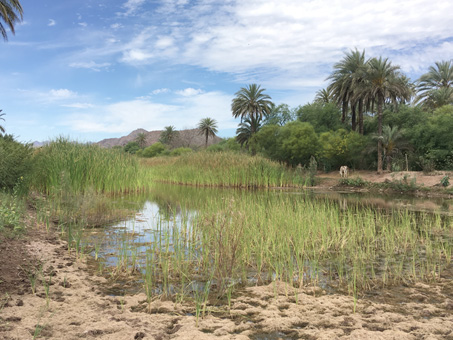
Wetlands west of the Ojo de Agua (May 2020).
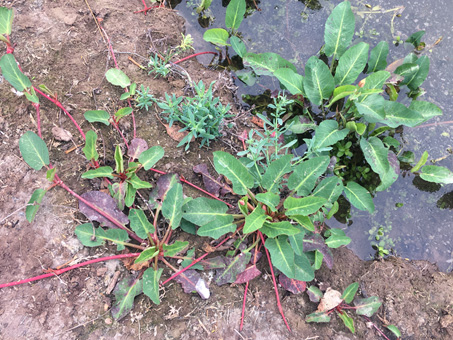
Yerba mansa (Anemopsis californica, Saururaceae).
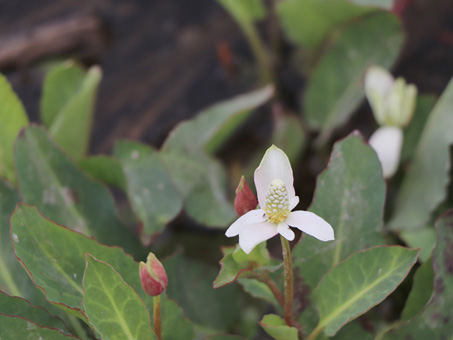
Yerba mansa (Anemopsis californica, Saururaceae).
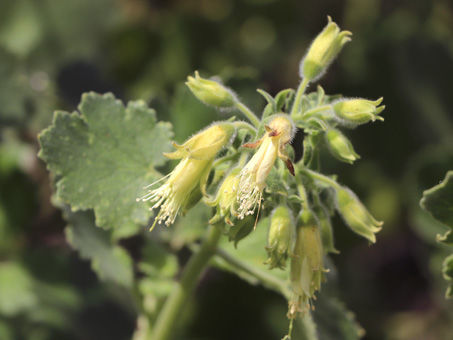
Eucnide cordata (Loasaceae).
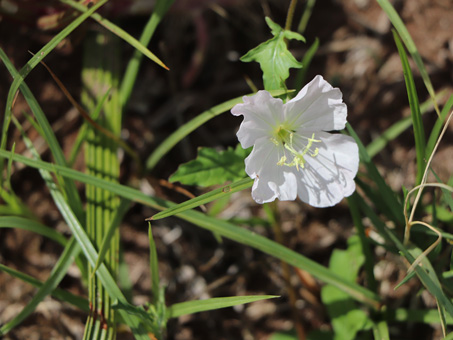
Oenothera kunthiana (Onagraceae).

Dry, hot conditions contributed to the rapid spread of a fire that raged through the Mulege palm oasis on May 6, 2020. The main fire was put out by nightfall. However, palm trunks can smoulder for days so firefighters were on extended duty to extinguish new outbreaks. It was still smoking six days later when this photo was taken.
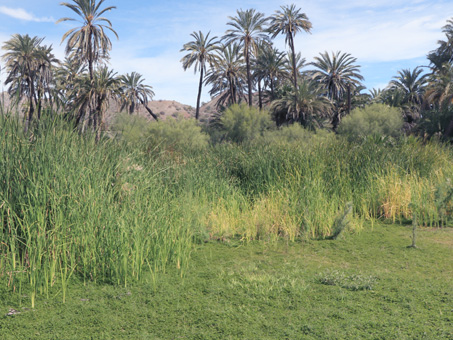
Near the Ojo, March 26.
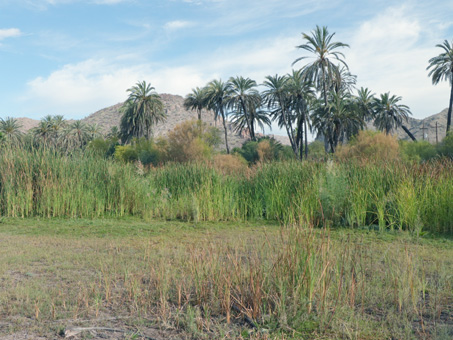
Same spot on May 12. Note the plants singed by the heat of the fire.
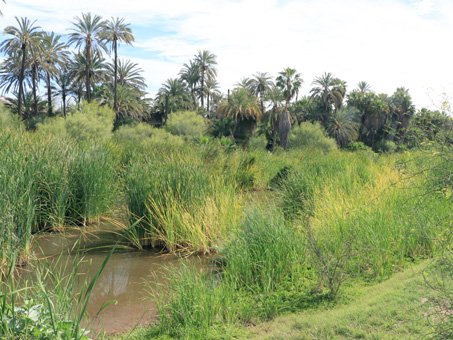
Near the Ojo, March 26.
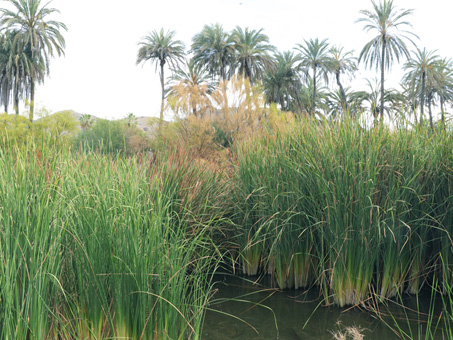
Same spot on May 12. Palo verde at center singed and water level down.
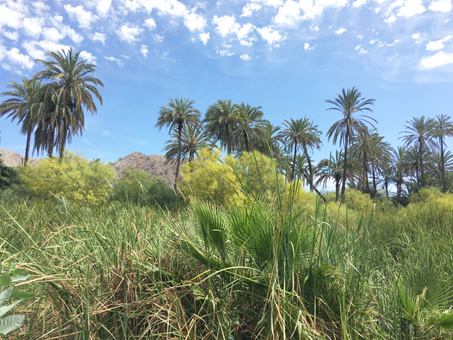
Near the Ojo, March 26.
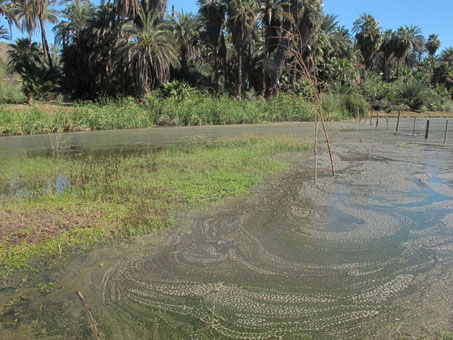
This area near what is known as Crucerito has changed greatly since the area was first bulldozed to clear out palms to help with flooding. Seen here in Nov. 2018.
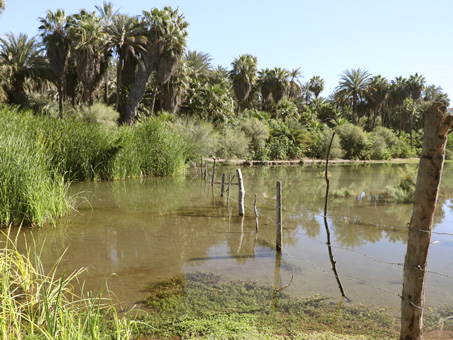
This from Feb. 2020.
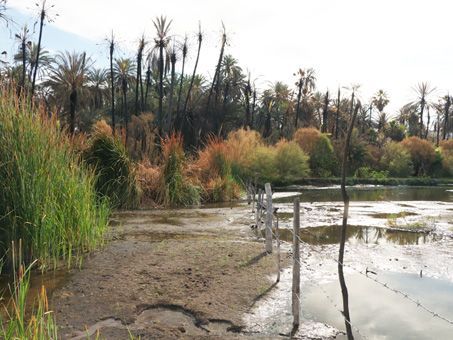
And this from May 12. The heat from the fire even singed prostrate plants that had been wet or even partly submerged.

March 26.
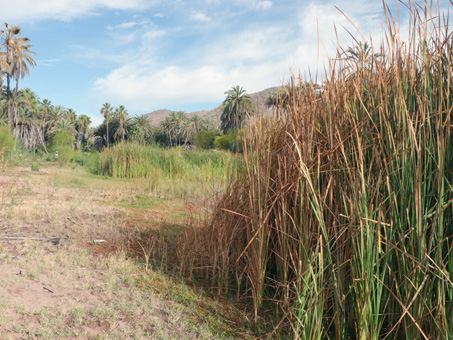
May 12. The Cattails felt the heat.
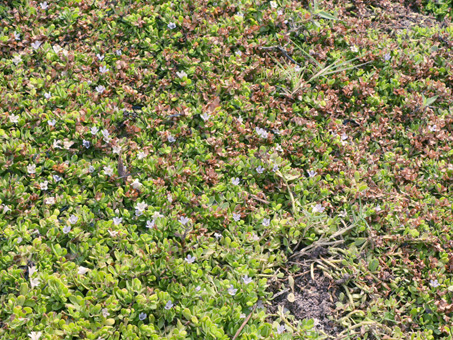
Even the Water-Hyssop (Bacopa monnieri) and Knotgrass (Paspalum pubiflorum) were a little scorched. May 12.
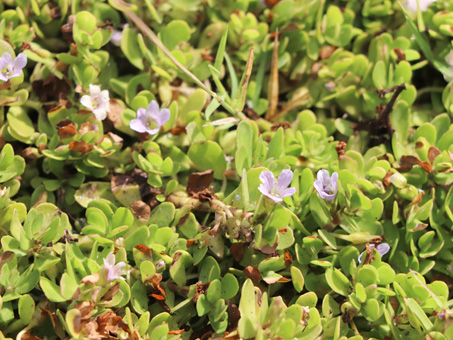
Closeup of the Water-Hyssop and Knotgrass.
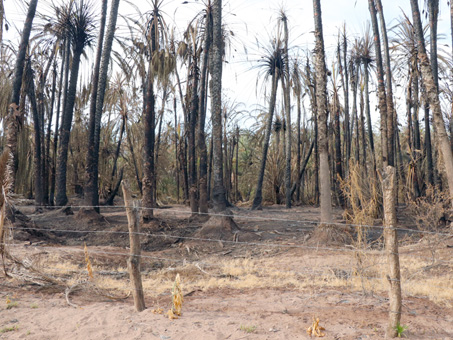
May 12. Some of the palms were left standing, their leaves partly or fully burned.
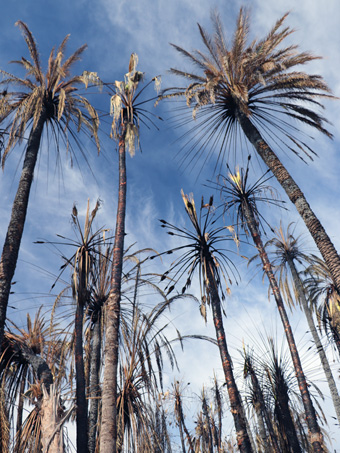
Once the uppermost leaves of palms are damaged, they won't grow back. Fortunately, some of these will regenerate.
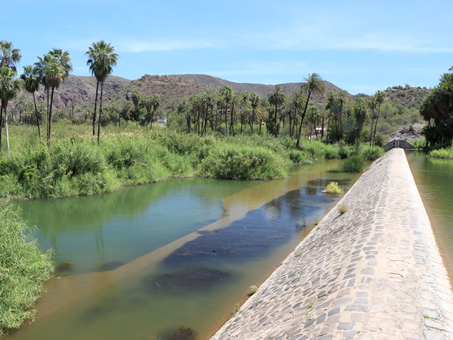
View of the downstream side of the dam. The dark areas in the water aren't aquatic plants (as I was hoping), but decaying debris from upstream caught in the dam's eddy.
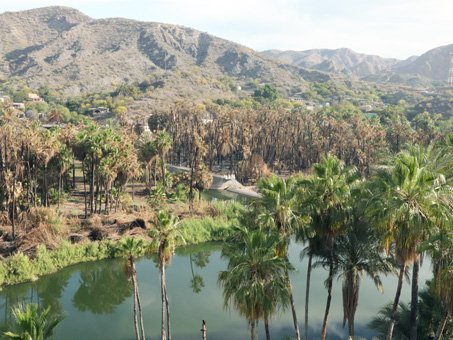
May 12. View from the Mirador on the hill by the Mission. The fire started somewhere across in the palms and spread upstream (to the left).
Mulege Valley
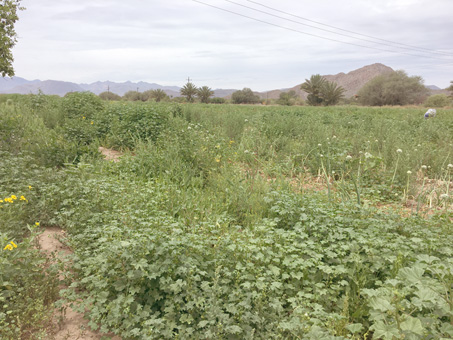
A field starting to fill in with weeds as the crops have been almost all picked. About 3-4 weeks left to the growing season, we were told on April 4.
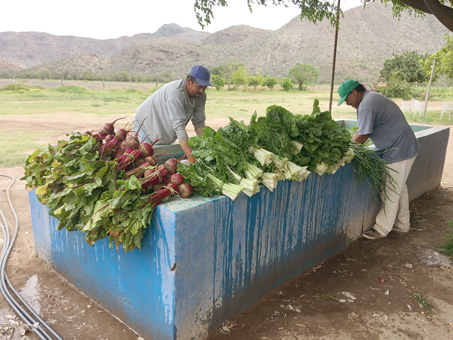
The harvest is placed in a big trough to get rinsed off and keep them from drying out until they are packed and shipped to local stores.
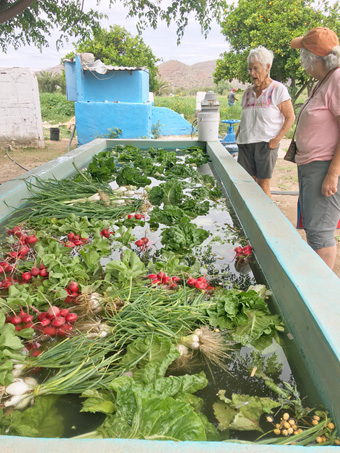
Green onions, radishes, Swiss chard, Romaine lettuce, beets, and cilantro were all available for purchase.

While we were able to select our own veggies from the water, we had to ask for one of the guys to get us some cilantro and a green cabbage right from the field.
I hope you´ve enjoyed this month´s entry. As I finish this, we are back home in California and I'm already thinking about next month's entry on our return trip north. It will retrace our steps through the San Felipe Desert and capture some of the spring flowers across the peninsula. Until then, hasta pronto...
Debra Valov—Curatorial Volunteer
References
Rebman, J. P., J. Gibson, and K. Rich, 2016. Annotated checklist of the vascular plants of Baja California, Mexico. Proceedings of the San Diego Society of Natural History, No. 45, 15 November 2016. San Diego Natural History Museum, San Diego, CA. Full text available online.
Rebman, J. P and Roberts, N. C. (2012). Baja California Plant Field Guide. San Diego, CA: Sunbelt Publications. Descriptions and distribution.
Wiggins, I. L. (1980). The Flora of Baja California. Stanford University Press. Keys and descriptions.






